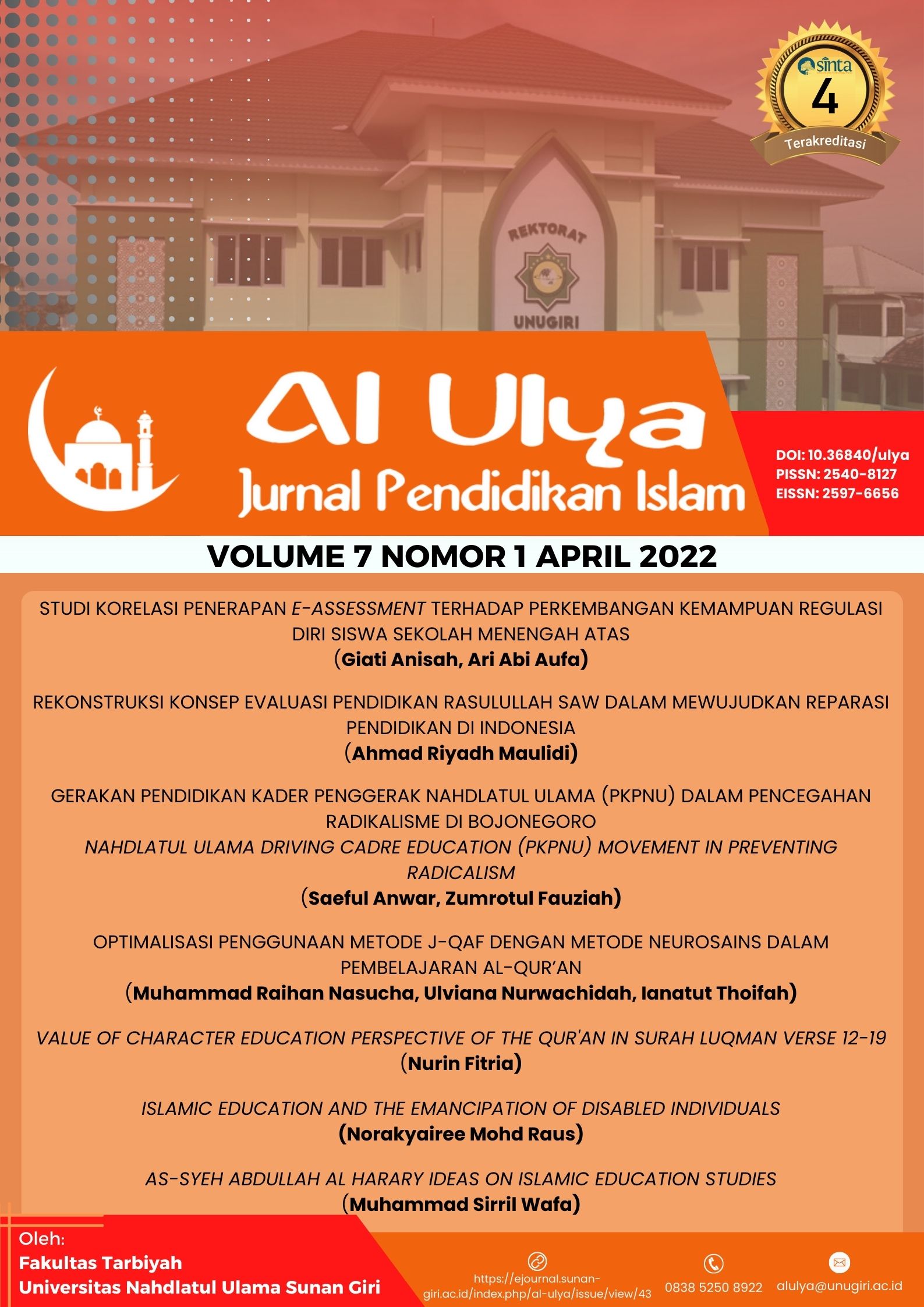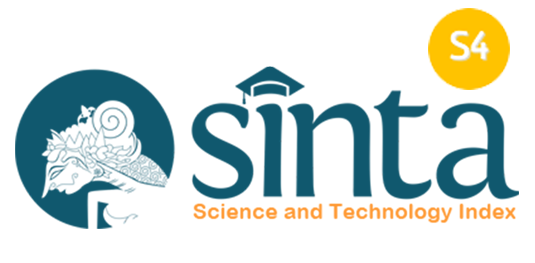STUDI KORELASI PENERAPAN E-ASSESSMENT TERHADAP PERKEMBANGAN KEMAMPUAN REGULASI DIRI SISWA SEKOLAH MENENGAH ATAS
 PDF Download: 41
PDF Download: 41
DOI:
https://doi.org/10.32665/alulya.v7i1.1556Keywords:
E-assessment, self-regulation, learningAbstract
This research is quantitative research with the type of correlation research. This study analyzed the correlation between the implementation of e-assessment and the development of self-regulation abilities. The populations are senior high school students in Tuban and Bojonegoro regencies, either SMA, MA, or SMK. Sampling was taken by cluster random sampling technique. Hypothesis testing was carried out using a simple regression technique through the SPSS for Windows application. The data were tested for normality and linearity before testing the hypothesis. Based on the results of the analysis, it was concluded that there was a significant positive relationship between the implementation of e-assessment and the development of students' self-regulation abilities. This significant relationship can be seen from the correlation coefficient of 0.685 with a value of p = 0.000 (p>0.05).
Downloads
References
Anisah, Giati, Universitas Nahdlatul, and Ulama Sunan, KERANGKA KONSEP ASSESSMENT OF LEARNING , ASSESSMENT FOR LEARNING , DAN ASSESSMENT AS LEARNING?, 03, 65?76
Black, Paul, and Dylan Wiliam, Developing the Theory of Formative Assessment, Educational Assessment, Evaluation and Accountability, 21.1 (2009), 5?31 https://doi.org/10.1007/s11092-008-9068-5
Boekaerts, Monique, and Lyn Corno, Self-Regulation in the Classroom: A Perspective on Assessment and Intervention, Applied Psychology, 54.2 (2005) https://doi.org/10.1111/j.1464-0597.2005.00205.x
Clements, Michael David, and Bonnie Amelia Cord, Assessment Guiding Learning: Developing Graduate Qualities in an Experiential Learning Programme, Assessment and Evaluation in Higher Education, 38.1 (2013) https://doi.org/10.1080/02602938.2011.609314
Facione, Peter A., Critical Thinking: What It Is and Why It Counts 2020 Update, E-Conversion - Proposal for a Cluster of Excellence, 2020, XXVIII
Frazier, Leslie D., Bennett L. Schwartz, and Janet Metcalfe, The MAPS Model of Self-Regulation: Integrating Metacognition, Agency, and Possible Selves, Metacognition and Learning, 16.2 (2021) https://doi.org/10.1007/s11409-020-09255-3
Inzlicht, Michael, Kaitlyn M. Werner, Julia L. Briskin, and Brent W. Roberts, Integrating Models of Self-Regulation, Annual Review of Psychology, 2021 https://doi.org/10.1146/annurev-psych-061020-105721
Kundu, Arnab, and Tripti Bej, Experiencing E-Assessment during COVID-19: An Analysis of Indian Students Perception, Higher Education Evaluation and Development, 15.2 (2021) https://doi.org/10.1108/heed-03-2021-0032
Lam, Ricky, Can Student-Generated Test Materials Support Learning, Studies in Educational Evaluation, 43 (2014) https://doi.org/10.1016/j.stueduc.2014.02.003
Romeu Fontanillas, Teresa, Marc Romero Carbonell, and Montse Guitert Catas?s, E-Assessment Process: Giving a Voice to Online Learners, International Journal of Educational Technology in Higher Education, 13.1 (2016) https://doi.org/10.1186/s41239-016-0019-9
Vaganova, Olga I., Zhanna V. Smirnova, Ekaterina V. Vezetiu, Maxim M. Kutepov, and Elena A. Chelnokova, ?Assessment Tools in E-Learning Moodle?, International Journal of Advanced Trends in Computer Science and Engineering, 9.3 (2020) https://doi.org/10.30534/ijatcse/2020/01932020
Zimmerman, Barry J., Becoming a Self-Regulated Learner: An Overview, Theory into Practice, 2002 https://doi.org/10.1207/s15430421tip4102_2
Downloads
Published
How to Cite
Issue
Section
License

This work is licensed under a Creative Commons Attribution-NonCommercial-NoDerivatives 4.0 International License.
 PDF Download: 41
PDF Download: 41













